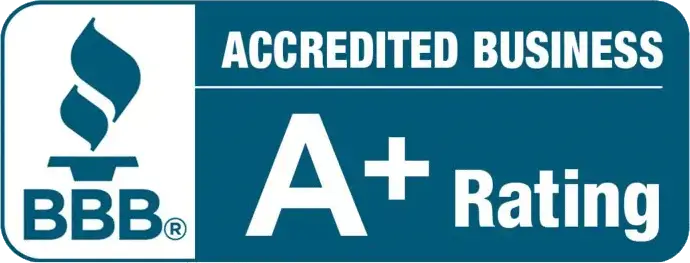Direct Mail Vs. Email Marketing Comparison and ROI (Return On Investment)
If you’ve ever wondered whether to choose direct mail vs. email marketing for a campaign, the answer depends on the audience and your approach. For reaching customers, members, or supporters who already know and trust you, email marketing may be more effective. However, for unsolicited outreach, direct mail likely has the advantage.

Here are some interesting statistics from the US, UK, and Canada that likely have implications for American consumer and business response behavior and decision-making patterns:
1. Open Rate Advantage:
Direct Mail has an open rate at least 3x higher than direct mail.
In Canada, over 85% of recipients read every piece of mail they receive whereas unsolicited email open rates average about 20% (when received).
2. Response Rate:
The Data & Marketing Association has stated that direct mail marketing has between a 5X to 9X response rate over email marketing. In recent 2023 study, the ANA (Association of National Advertisers) DMA (Direct Marketing Association) Statistical Fact Book study found that direct mail achieved around a 2 1/2% to 4 1/2% response rate over an average email response rate of about 1/10th of 1%
3.Longevity:
In one survey, American recipients spent an average of 1.6 minutes with direct mail advertisements, many, many times greater than that for email advertisements. Not surprisingly, mailers or postcards “hang around” longer than emails (think: your kitchen counter), and therefore get more eyeball time.
One study by the DMA (Direct Marketing Association) found over 25% of direct mail to be still “live” in a household in one month.
4. Brand Awareness:
In a legacy study from the USPS in 2012, Americans received approximately pieces of advertising mail for every 150+ emails. By 2024, the over-saturation of email has only gone up, leaving direct mail as holding greater relevancy for the consumer.
Even aside from neuroscience studies such as the 2017 study made at the Fox Business School at Temple University, direct mail is simply slightly easier to process mentally for brand awareness because it requires less cognitive effort to absorb, understand and recall over digital media.
Direct mail doesn’t operate in a web-surfing context and isn’t apt to the distractive glimmerings (e.g. pop-up ads) that are contextually part of a web environment.
5. Trustworthiness:
Approximately 60% to 70% of consumers trust the source of direct mail they receive. 70% of American Gen Z consumers are excited to get direct mail each day.
6. ROI (Return on Investment):
At the end of the day, your bottom-line assessment likely comes down to an ROI comparison — what are the time and cost benefits in direct mail vs. email marketing? At Cornerstone Services, we find that as of 2024, generalized, bottom-line statistics don’t give a simple answer due to the variables involved in each communication method. While CRST.net staff set up Mailchimp email campaigns for small businesses and 501(c) organizations, our primary focus remains on direct mail. We can make a case for either approach.
On one side of the fence, Americans receive more emails per capita than any other country in the world and checking inboxes multiple times a day, but then only look at each email on average no more than a few seconds…. not encouraging facts when you’re trying to build brand awareness. That said, technically, email marketing — once set up, and when done correctly and lawfully, AND over time (!) — has a better ROI advantage over direct mail, but “God is in the details” and, like anything worthwhile, it takes time to set things up properly. Email marketing effectiveness rates have steadily declined since 2004. Although the average click-through rate is only around 1.4%, having a known and friendly audience can well send the email response rates (and accompanying ROI) higher, especially if you have a compelling opportunity in hand (commercial or non-profit).
Of further note, so many U.S. businesses send unsolicited/unconsented email not technically in line with the FTC’s (Federal Trade Commission’s) 2003 CAN-SPAM Act (as amended), and this uneven foundation doesn’t equate to legitimate ROI parity. Yet again, in a 2022 ANA (Association of National Advertisers) “ANA Response Rate Report, 2022” study, findings concluded that direct mail enveloped letters had an 85% to 112% ROI performance compared to email marketing’s 93% ROI performance.
As a final cautionary note, as with crafting a direct mail piece, there is an art to crafting an encapsulated message within email marketing; done poorly, and more than direct mail recoil, ill-will from sloppily created email campaigns can have an unintended lasting negative taste in the recipient’s minds, meaning it’s easier to piss people off with bad emails over bad mailers.
So… what to do? Cornerstone’s recommendations to clients is this: do both but be sure to use both direct mail and email to drive website traffic. Our feeling is that if you use direct mail correctly, and email properly, any business organization should be fine. The only way to determine what works better is to incorporate core measurement indices or tools, such as these: dedicated website pages set-up with Google Analytics; coupons; custom QR Codes that send customers to personalized webpages; required responses such as RSVPs through online sign up or use of CRE (Courtesy Reply Envelopes).
Good luck with your marketing efforts and be sure to contact us at info@crst.net if you need any marketing communications help!
